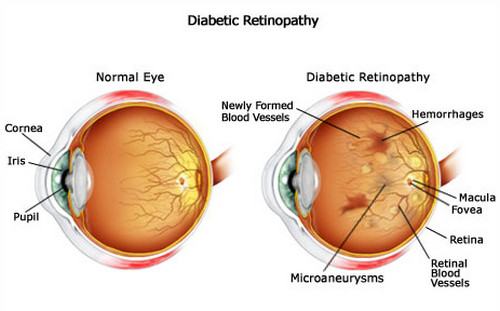Impact of diabetes on the vision
One of the most frequent causes of loss of vision is eye diseases related to diabetes. Formation and progression of the diabetic retinopathy depends on the type of diabetes mellitus and age of the patient when diabetes is diagnosed. Diabetic retinopathy is based on:
- Alternations in the small blood vessels of retina (internal cover of the eye) that is caused by the continued increase of sugar level in blood;
- Pouched increase of the small blood vessels of retina;
- Increased penetrability of blood vessels;
- Multiplication of the new formed blood vessels and scar tissues in retina and outside retina.
As a result swelling, lipid residues ("hard exudates"), haemorrhage, dilatation of veins, focal points of infection (including, zones of the lack of oxygen, newly formed blood vessels, broad haemorrhage in the vitreous humor) detachment of retina can be observed.
Pressure in the eyes increases, when the newly formed blood vessels grow into the zone where fluid should flow.
Classification of diabetic retinopathy:
- Non-proliferous;
- Pre-proliferous;
- Proliferous.
Laser coagulation of retina could be used in treating diabetic retinopathy - it helps to eliminate oedema of the retina and newly formed blood vessels, therefore preventing further worsening of vision.





